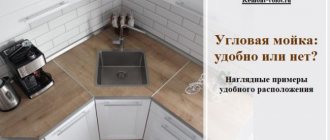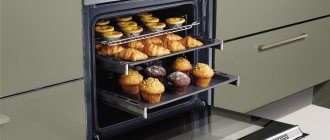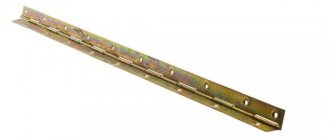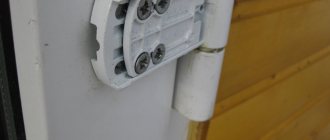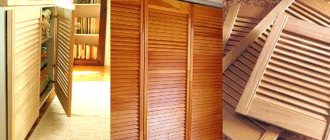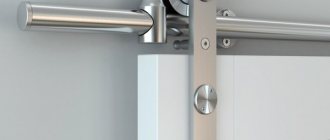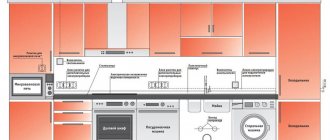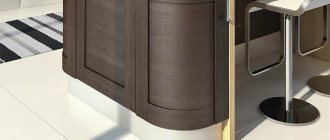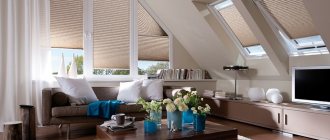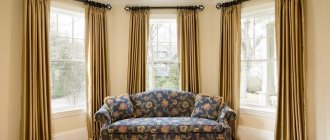To ensure the most comfortable operation of household appliances, so that the power wires do not become annoying interference, it is necessary to conveniently place the points of their connection to the electrical network. At the same time, it is always recommended to do without additional extension cords, and for some models of household appliances they are completely excluded. Sockets in the countertop become a convenient aid for optimal organization of such placement.
Tabletop sockets: types, features and selection rules.
These devices are blocks that usually contain several sockets that allow you to simultaneously connect several household appliances to power. The blocks can have a built-in or retractable design; their color and texture are matched to the working surface of the table, so they fit harmoniously into the interior design of the room. Practicality, ease of installation and operation have become the basis for the popularity of such devices. A wide range of models of various designs and sizes are available for sale. Therefore, before settling on a specific option, it is worth familiarizing yourself with some of the nuances of choosing such “devices”.
Location of sockets in the kitchen
Hidden horizontal socket in the kitchen
Sockets in kitchen areas are recommended to be installed in 3 tiers:
- The top one is for hoods and lighting of hanging cabinets.
- Central - located 10-15 cm above the countertops. Small household appliances are connected here: kettle, mixer, blender and others.
- Bottom - power supply for the most powerful built-in appliances that are constantly online: dishwasher, oven, refrigerator, etc.
It is recommended to connect built-in equipment with a high load through an RCD. There must be grounding.
Approximate layout of sockets in the kitchen
Before installing hidden kitchen sockets in the countertop, you need to calculate their required number. To do this, you must follow several basic calculation rules:
- The number of sockets should be 25% more than the number of electrical appliances in the kitchen. This will create a reserve for connecting additional devices: a kitchen vacuum cleaner or a fan. Example – for 8 pieces of equipment you will need to install 10 sockets.
- The wiring power is calculated in accordance with the total power indicator of all electrical equipment. This is necessary so that the electrical wiring has a double reserve for powering the devices. Sockets are divided into 2 types: 16 A – load up to 2.2 kW; 10 A – load no more than 3.5 kW. You cannot supply more power to an outlet than its rated load;
- Devices with a high power rating, for example, an electric stove or boiler, must be connected through circuit breakers to a separate power line.
Pull-out sockets are extremely convenient for use in the kitchen. This is especially noticeable when using those devices that do not require a constant connection to the network.
What interior style would suit built-in sockets?
It's safe to say that hidden sockets will look great in a kitchen decorated in any style. And it is not just words. For example, in a room decorated in a high-tech style, they perfectly complement the overall idea, as they look very modern.
But in a kitchen decorated in a classic style, sockets and wires generally look quite foreign and destroy the clearly defined design. Therefore, hidden models for such an interior will be an ideal choice.
Types and features of retractable sockets
Built-in sockets in a tabletop - a block of 2 or more sockets, mounted in a metal or plastic case, which is equipped with a retractable mechanism. The device is removed from the tabletop by light pressure and is just as easily immersed in it when pressed. A device of this type is a kind of surge protector, but it does not have bundles of wiring that are not so aesthetically pleasing. The modern market offers users several types of retractable devices.
Vertical retractable socket for table top
Vertical retractable socket
This type of socket is used most often. At the same time, their design is not the most practical and durable, since the “tower” rising above the tabletop can be accidentally touched and easily damaged. In addition, the retractable vertical block is subject to loosening, because when inserting the fork you need to apply some force.
Horizontal retractable socket
It differs from other retractable devices in the horizontal placement of the socket block and the height indicator of the retractable part. This design has high strength and is also more convenient to use. Horizontal blocks also have a significant disadvantage - the problematic connection of equipment with side-type plugs.
Pull-out rotating socket block
Retractable rotary socket block
Built-in sockets of the rotating type are the most versatile among retractable designs. They are ideal for arranging kitchen worktops, therefore they are very reliable and demonstrate a high level of ergonomics. The rotary blocks are tightly fixed in the plane and withstand frequent insertion/pulling out of forks, which means they are durable.
Unlike traditional pull-out blocks, this design is equipped with a rotating mechanism. It is triggered by pressing a finger on a certain area of the front cover. After opening the sockets, the device is fixed at an angle of 45 degrees.
The rotary block of sockets has some design flaws - locking and moving mechanisms that fail over time. It is also problematic to connect side-type plugs in them.
Based on the type of installation, rotary blocks are divided into 2 types:
- mortise – installed directly into the plane of the tabletop;
- corner – mounted in 90-degree corners (wall joints, wall/wall cabinet combination).
Hidden sockets
Socket built into the countertop
The hidden block of sockets is considered the most reliable and durable, since it has no movable mechanisms. In essence, this is a classic extension that is recessed into the furniture body or the plane of the countertops. Such devices are unable to change their position. A decorative cover protects the unit from penetration of dust and moisture. To connect electrical equipment, the cover must be lifted up or moved to the side. This is the only disadvantage of hidden devices - the cover hides space on the work surface.
Classification of blocks built into countertops
Installing a retractable socket block in a wall cabinet
Desk-mounted sockets are a stylish solution for kitchen and office spaces. They can be mounted either on the surface of the tabletop or in cabinets or tables. Such blocks are an excellent alternative to standard extension cords and demonstrate higher versatility and ease of use. Regular extension cords are not always appropriate, especially in areas such as conference rooms or designer kitchens.
According to the type of design, retractable sockets are:
- horizontal;
- vertical;
- hidden.
Horizontal type blocks can have from 1 to 5 power connectors. In addition to traditional plugs, they can be equipped with USB, HDMI and Ethernet ports for connecting Internet access.
Based on the method of access to sockets, blocks are divided into retractable and rotary.
Some models of socket blocks are equipped with a 180 or 360 degree rotation function. Most of them are backlit for ease of working in the dark and creating an appropriate style.
Rotary type devices have a high degree of reliability. They actually have no disadvantages, with the exception of one factor - the inability to interact with side forks.
Retractable sockets can be placed:
- In wall cabinets.
- In the plane of tables/tabletops.
- In the corner connection between the wall and the countertop.
One of the main characteristics of a mortise socket is the presence of IP44 protection (resistance to dust and moisture).
How to distribute the power load
Before purchasing and installation, you need to correctly calculate the number of electrical outlets. To do this, you need to calculate the power load from all the equipment in the kitchen.
How much power do kitchen appliances consume:
- lighting –200 W;
- microwave oven – 2000V;
- refrigerator – 100 W;
- electric kettle – 2000 W;
- dishwasher – 1500-2000W;
- water heater – 2000W;
- washing machine – 2500 W;
- electric stove - from 5000 W to 15000 W.
Powerful electrical appliances are equipped with separate sockets that can withstand such a load.
As a rule, the maximum power of several operating devices should not exceed 7 kW. Otherwise, you should think about introducing a 380 V power supply and distributing the load across phases.
The number of sockets should be equal to the number of connected units, plus a few in case of breakdown or inconvenience of use.
Features of retractable structures
The principle of operation of a retractable socket
Retractable socket blocks make it possible to save space, as they eliminate the need to lay a separate power line for installing additional network points.
The main features of such devices:
- the number of integrated connectors is from 1 to 5, all of them are grounded;
- The cable length varies between 3-5 meters, depending on the device model;
- The unit can be connected to the general power supply using a fixed plug or via electrical terminal blocks.
The operating principle of retractable units is quite simple. In a static state, the structure is completely hidden in a cabinet or countertop. To connect any electrical appliance, you just need to press the decorative cover, after which it will begin to slide out, freeing access to the sockets. There are models that rise completely on their own or extend only a couple of centimeters. They need to be pulled up by hand.
To hide the socket blocks, you just need to press them from above and lower them into the tabletop until they click.
Advantages and disadvantages
An illuminated socket block can serve as a night light.
Retractable socket blocks are becoming increasingly in demand in modern interiors, as they have a whole set of undeniable advantages:
- High versatility.
- Do not take up space on the work surface.
- Suitable for connecting small kitchen electrical appliances that are not constantly used.
- There are models on the market that are protected from moisture and dust. There are also devices with a child lock feature.
- An ideal combination with any interior style.
- Possibility to choose between vertical and horizontal blocks.
- Availability of additional connectors, for example, USB or HDMI.
- Possibility of mounting on any surface – table/table top.
In addition to a lot of advantages, the devices have several disadvantages:
- Quite a high cost.
- When installed in a hanging cabinet, its internal volume is hidden.
- Impossibility of installation in areas of the countertop where there are drawers underneath.
- Vertical blocks can be easily damaged due to their height.
All the shortcomings of retractable sockets are compensated by their versatility. The non-working block is invisible to the naked eye; its shape resembles an ordinary decorative ring/rectangle on the table surface.
Some information about the manufacturers
When purchasing recessed sockets, you must place your bet on a trusted manufacturer. The most popular today are the products of the German company Evoline, the Swiss company Kondator, and the Italian factory Simon Connect. From the French it is worth highlighting Schneider Electric, the Poles - GTV, and the Russians - Ekoplast. Most often, submersible sockets are made from high-quality and durable materials.
Companies that have been in the kitchen accessories market for a long time try to monitor reviews of their products and guarantee their trouble-free operation. If a regular overhead socket is not suitable, and you don’t have enough money for a good brand, you can easily get by with “Chinese” ones, including Desc Socket or Displace. Mortise blocks are visually very similar to the original prototypes, but may be significantly inferior to them in manufacturing quality.
Chinese sockets, as a rule, are made from very cheap components, which is why their performance is limited to 6-12 months. Problems may arise gradually. At first, the integrated block opens on its own and does not lock in the specified position. After this, the contact weakens, the plastic begins to heat up, which ultimately leads to failure.
It is advisable to protect the corresponding power lines with good differential circuit breakers.
It is incredibly easy to find a suitable option that matches the kitchen interior and furniture design. Recessed, pop-up sockets are available in various colors. Particularly appreciated are options finished in natural gold, silver, bronze, polished stainless steel, with black, white and other coatings. Before purchasing, the selected item should always be checked for damage and completeness.
Features of choice
Built-in GTV sockets
When choosing a retractable socket block, you need to be guided by the price/quality ratio, and also pay attention to the following factors:
- The required number of network connectors and the availability of additional ports for USB devices, audio equipment, and others.
- The specific power of the unit - an indicator of the total power of all electrical equipment should not exceed it.
- The ability of the socket block to withstand voltage surges (filter function).
- The quality of the materials used to make the sockets. Cheap plastic will not withstand frequent connections/disconnections. Such devices have a short service life.
- IP44 protection available. Prevents dust and moisture from entering the unit. This is especially important when choosing sockets for kitchen premises.
Many users, when choosing retractable socket units, try to save money on purchases, giving their preference to Chinese brands. There is nothing bad here, provided you purchase a truly branded device. The main thing is not to buy copies of well-known manufacturers who sell them at a low price, supposedly on promotion. In addition to their low durability, such blocks are also dangerous: their plastic cracks when exposed to temperature and moisture, which can lead to a short circuit.
Installation rules
When installing retractable sockets, you must adhere to several basic rules.
It is strictly forbidden to install blocks near the stove and near the sink. A short circuit can be caused by moisture and elevated temperatures. Sockets must be installed at a distance of at least 60 cm from the sink and stove.
The process of installing hidden sockets
Installation of a built-in retractable socket in a tabletop
Installation of retractable socket blocks is not difficult; home craftsmen can do it themselves without difficulty.
Algorithm of actions:
- De-energize the room.
- Mark the installation location of the block.
- Using a crown saw or jigsaw, make a hole (diameter 65 mm) for mounting sockets in a table, cabinet or countertop.
- Secure the device using the fasteners included in the kit.
- Connect the unit to the network.
If you do not have the necessary tools at home, it is better to seek help from specialists.
Selecting a device location
A retractable vertical socket is mounted in a corner wall cabinet.
Retractable sockets are best installed in the following places:
- In the work areas of countertops and tables where food preparation occurs. The optimal solution here would be to install a block with 4-5 network connectors.
- In eating areas and canteens.
- A vacation spot for the whole family. Here, the most rational option would be to install socket blocks with combined connectors, with USB and HDMI. This will allow you to connect phones and laptops to the network and the Internet.
The placement of each retractable block must be thought out in advance. This will save owners from situations when one block is not in demand and the other is overloaded.
More about brands
Products from the Polish company GTV (Werkpol) are well known to furniture production specialists. Most often you have to deal with high-quality fittings.
The production of electrical devices has also relatively recently begun under the same brand. The advantage of the products is their relative availability and reliability. The range includes horizontal and vertical electrical sockets.
Legrand is a leader in the production of electrical products. The main “headquarters” is located in France. The holding has mastered the production of 215 product models and received patents for 4,500 of its own projects.
The company's enterprises are located in 80 countries around the world, employing 36,000 people. The company's annual cash turnover reaches 4,500 thousand euros. The common man may be familiar with the following brands of the Legrand group - Vantage, BTicino, Cablofil, Estap.
The domestic market of the Legrand company is represented by electrical fittings, socket blocks of stationary and retractable versions. The products are available in the most popular color options, including white, gold, metallic, black and silver. Sockets are made modular, the total number of connectors in which can reach up to 8 units. Retractable samples are characterized by smooth operation and ease of pressing.
Another serious manufacturer of electrical accessories is the German company Evoline, known for its products since 1964. Today it is one of the European leaders in the development of innovative solutions. Over the entire period of its existence, the manufacturer has officially registered and patented over 300 different discoveries in the field of electrical engineering.
Evoline production facilities are located in Germany, the city of Lüdenscheid. It is here that more than 1,500 thousand units of products are produced annually. Among the built-in fittings, the modular model PortCuisine should be noted. One device can have standard grounded outlets, HDMI digital inputs, USB ports and telephone jacks.
It is also worth noting the production of the Swedish company Kondator, which offers built-in socket blocks with vertical placement. Unlike many other companies, it produces fittings in an aluminum case.
Particular attention should be paid to the SmartlinePopup line of three modules. There are options for different numbers of power contacts. Possible versions with Rj45, HDMI ports, connectors for VGA, USB, audio devices.

